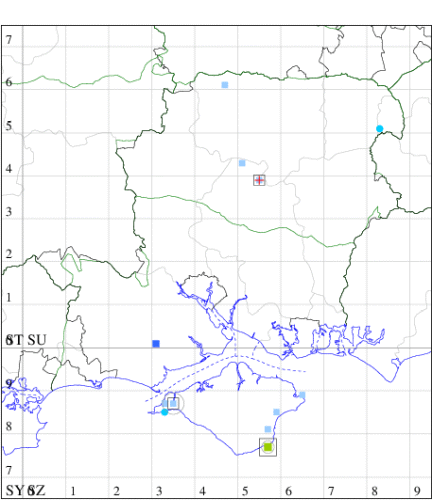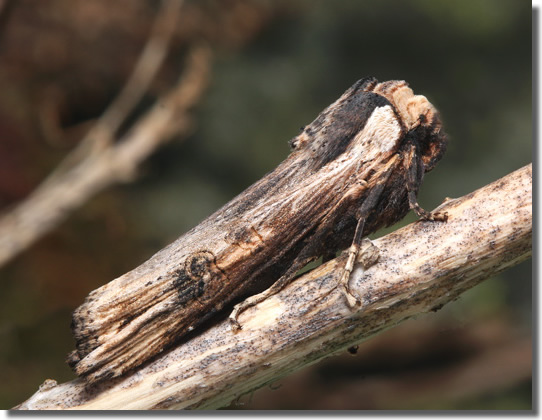Sword-grass
Xylena exsoleta
Checklist Number73.208 [B&F: 2242]
Verification
Record will require further evidence, at least a good photograph, unless CMR is aware recorder has confidence in identification
Nationally scarce (Nb) on moorland, rough grassland and upland woodland, generally restricted to uplands in parts of Scotland, Shetland and northern England, rare elsewhere, a priority species under the UK Biodiversity Action Plan. In Hampshire and on the Isle of Wight formerly resident in all three vice-counties, now an extremely scarce presumed immigrant: the only recent record is of one taken at sugar at Freshwater in October 1978. Wingspan 58-68 mm. There is sometimes a very dark median subdorsal patch which can cause confusion with Red Sword-grass X. vetusta. Larva feeds on Creeping Thistle, Musk Thistle, Spear Thistle, Creeping Cinquefoil, Common Restharrow, Groundsel, Dock and Hop.


The abundance in each month is indicated as follows:
 No records
No records Very occasional
Very occasional Irregular
Irregular Uncommon
Uncommon Off-peak, but not unusual
Off-peak, but not unusual Off-peak, but not unusual
Off-peak, but not unusual Main flight time
Main flight time| J | F | M | A | M | J | J | A | S | O | N | D | |
|---|---|---|---|---|---|---|---|---|---|---|---|---|
| Adult |  |  |  |  |  |  |  |  |  |  |  |  |
| Larval |  |  |  |  |  |  |  |  |  |  |  |  |
Records by week (adult)
Records by week (larval)
VC10 Isle of Wight
| Site | Date | Quantity | Recorder | Stage |
|---|---|---|---|---|
| Bembridge (SZ68) | 1856 | - | IWG | Adult |
| Freshwater (SZ38) | 1856 | - | IWG | Adult |
| Sandown (SZ58) | 1856 | - | IWG | Adult |
| Shanklin (SZ58) | 1856 | - | IWG | Adult |
| Ventnor (SZ57) | 10/1875 | one | Buckmaster | Adult |
| Freshwater (SZ38) | 07/10/1978 | one | Peter J Cramp | Adult |
| Freshwater (SZ38) | 07/10/1978 | - | Anon | Adult |
| Bonchurch (SZ57) | 15/02/2019 | one | James Halsey | Adult |
VC11 South Hampshire
| Site | Date | Quantity | Recorder | Stage |
|---|---|---|---|---|
| Roydon Woods NR (SU30) | 1999 | - | Phil Budd | - |
VC12 North Hampshire
| Site | Date | Quantity | Recorder | Stage |
|---|---|---|---|---|
| East Stratton, Nr Micheldever (SU53) | 20/06/1930 | one | C Strange | Larval |


